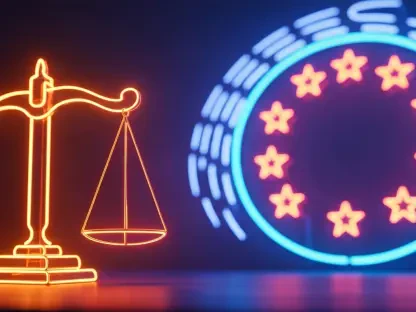Your peers in the legal sector are facing a new and growing challenge: algorithmic tools that threaten the fairness of legal outcomes.
From predictive policing to sentencing software, technologies once designed to improve efficiency are now raising serious concerns. In civil rights litigation, these tools risk subtly but significantly skewing the scales of justice.
If your legal department is responsible for ensuring compliance, minimizing liability, and preserving brand trust, you’ll want to pay attention to how algorithmic bias is reshaping risk. What used to be the domain of IT or operations has now become an urgent matter for general counsel, legal operations teams, and even diversity, equity, and inclusion leads.
In this article, you will examine how algorithms are influencing legal outcomes and what that means for civil rights cases—and your organization’s legal strategy.
Continue reading to understand:
How algorithmic bias is creeping into civil rights litigation
Why legal teams must proactively address AI-related legal exposure
What your peers are doing to mitigate risks and realign legal ops for the AI age
The Algorithm on Trial
The legal system has always struggled with human bias. But now, algorithms are introducing new forms [of bias] that are harder to detect and to challenge in court.
Take, for example, Correctional Offender Management Profiling for Alternative Sanctions, a risk assessment algorithm used to help judges determine sentencing and parole; investigations found that the algorithm misclassified 45% of black defendants as high risk, nearly double the rate for white defendants. In the Loomis v. Wisconsin case, the defendant challenged the legitimacy of being sentenced based on this proprietary algorithm, one he couldn’t access, understand, or contest.
More recently, the risks of opaque AI systems have extended into law enforcement. In 2020, a Michigan man was wrongfully arrested due to a facial recognition error. His case, and others like it, have prompted a surge in civil lawsuits citing Fourth and Fourteenth Amendment violations, including unlawful search and denial of due process.
As these cases grow, legal departments are rethinking their role in managing algorithmic risk, especially those advising public sector entities, corporate compliance units, or private firms relying on third-party AI vendors.
The Unseen Legal Exposure
Many legal teams view bias lawsuits as a distant issue—until suddenly, they’re not.
Companies using AI in employment screening, loan approvals, customer service, or content moderation are increasingly being pulled into high-stakes litigation, often tied to civil rights protections under Title VII, the Americans with Disabilities Act, or the Fair Housing Act.
In 2024, the Equal Employment Opportunity Commission launched a sweeping investigation into AI-based hiring platforms. The result? Several Fortune 500 companies found themselves in legal hot water when algorithms disproportionately excluded candidates with disabilities or from minority backgrounds, despite the companies claiming they had “no knowledge” of how the algorithms worked.
That’s exactly the problem: opacity. Legal departments cannot audit what they cannot see, making it nearly impossible to assess risk or build a defensible position if challenged.
This is why your peers in legal leadership are shifting their teams from reactive support units to proactive governance partners. Instead of waiting for litigation to strike, they’re embedding legal review earlier into the AI development and procurement lifecycle.
Legal Teams Cannot Afford to Stay on the Sidelines
Research shows that corporate legal departments say they’ve either implemented or are in the process of developing AI governance policies.
Why? Because the consequences of inaction are no longer theoretical, as institutions are being confronted with:
Reputational fallout: Brands hit with civil rights lawsuits over algorithmic bias often face viral backlash, press scrutiny, and loss of consumer trust. Legal has become a brand steward by necessity.
Regulatory action: New guidance from the Federal Trade Commission warns that using biased algorithms can constitute discrimination. In 2022, they issued a report to Congress warning “that AI tools can be inaccurate, biased, and discriminatory by design, relying on increasingly invasive forms of commercial surveillance.
Cross-border complexity: The General Data Protection Regulation’s Article 22 protects EU citizens from being subject to fully automated decisions. With a similar legislation emerging in Canada, Brazil, and parts of Asia, legal departments now need to account for global compliance implications.
Whether you’re an in-house counsel at a multinational or advising clients through a law firm, the message is clear: Mitigation begins with oversight.
A New Mandate for Legal Ops
As algorithms become more embedded across business processes, the old silos between legal, compliance, IT, and product are breaking down. Legal ops are emerging as the bridge.
Your peers are doing things differently; the most forward-thinking legal departments are:
Centralizing AI accountability: They define who owns algorithmic outcomes and who’s responsible for oversight.
Embedding legal in AI workflows: From vendor selection to model deployment, legal is now a default stakeholder.
Upskilling legal staff: Teams are being trained in data science basics, bias detection, and emerging AI regulation.
Creating ethical review boards: Legal leads cross-functional ethics committees to evaluate use cases through civil rights lenses.
Establishing audit trails: They ensure models are explainable, decisions are traceable, and data inputs are documented.
It’s all about equipping legal departments to spot risks earlier and respond faster when algorithmic decisions threaten civil rights or regulatory compliance.
Key Takeaways for Legal Leaders
Bias is a legal issue, whether human or machine
Whether the harm comes from people or algorithms, the courts are responding. Legal teams must now anticipate how automated decisions will be made.
If your organization uses AI, delegating oversight to compliance or IT is no longer enough. Legal must lead. Courts are beginning to evaluate the use of opaque tools in everything from sentencing to hiring, so:
Legal cannot rely solely on compliance or IT: Departments must step into strategic roles and shape how AI is developed, purchased, and deployed.
Cross-functional collaboration is essential: Legal, risk, product, and data science must coordinate on governance and documentation.
Global regulation is heating up: The legal burden doesn’t end at national borders—international AI laws are catching up fast.
Ethical AI is good legal risk management: Focusing on fairness, explainability, and accountability isn’t just idealistic—it’s pragmatic.
The courts are evolving. Your legal strategy should, too.









